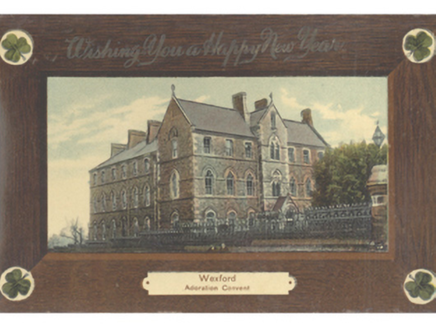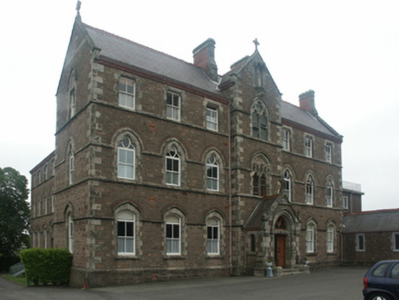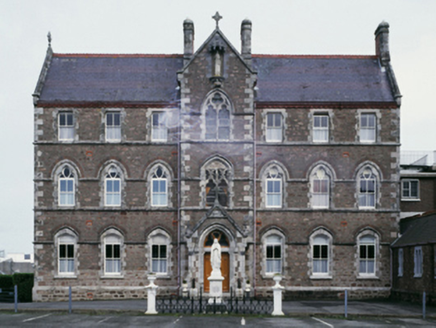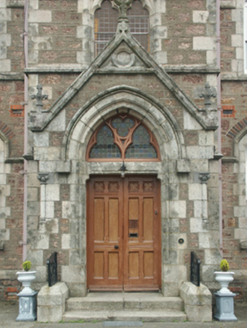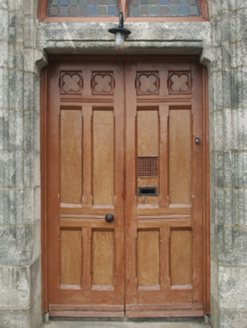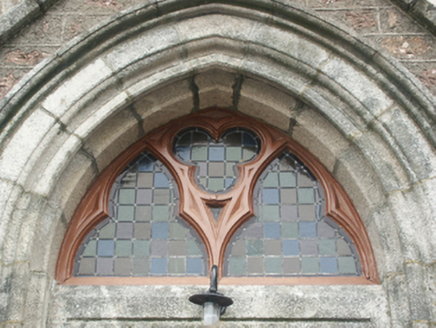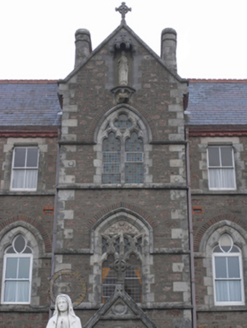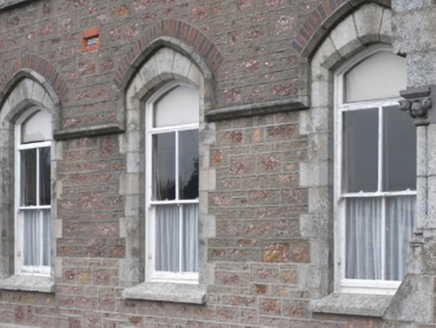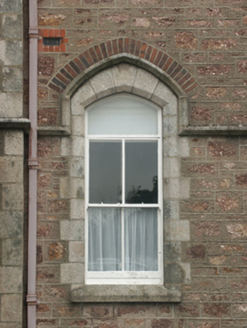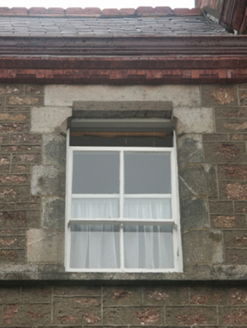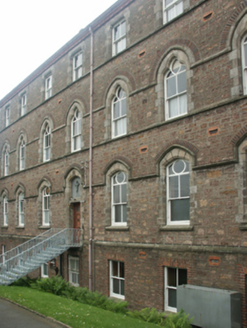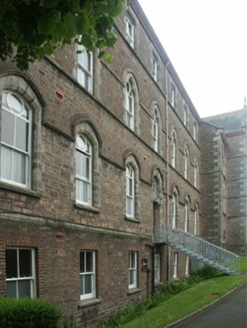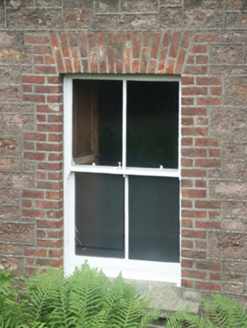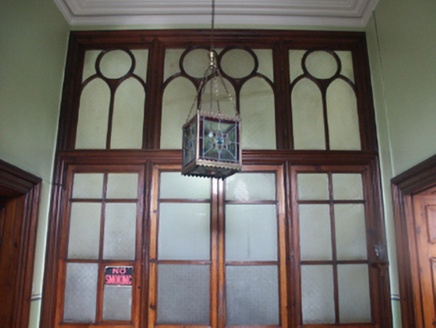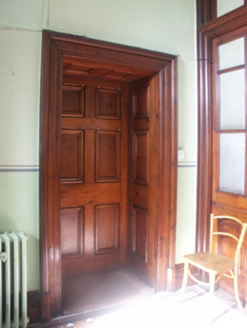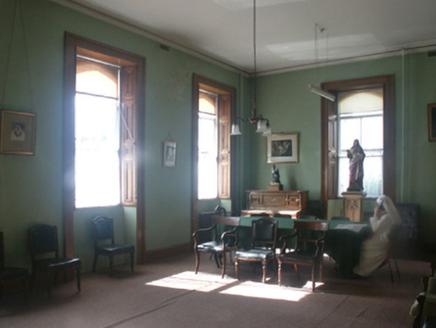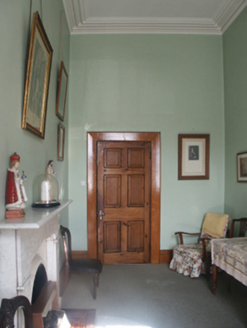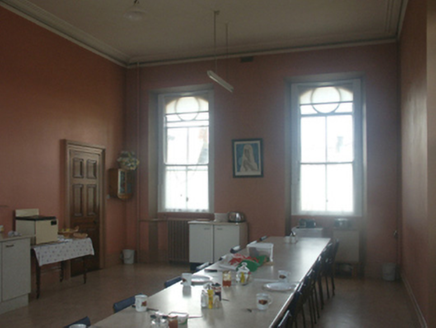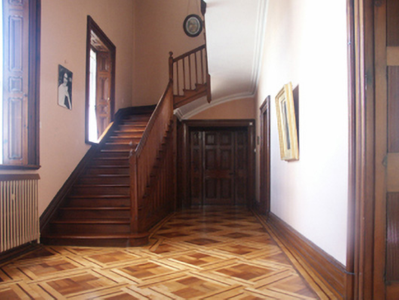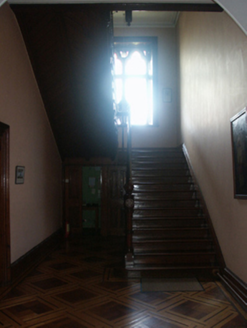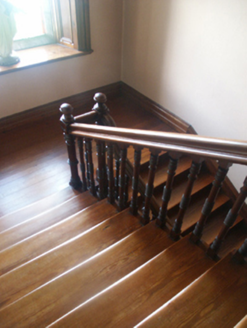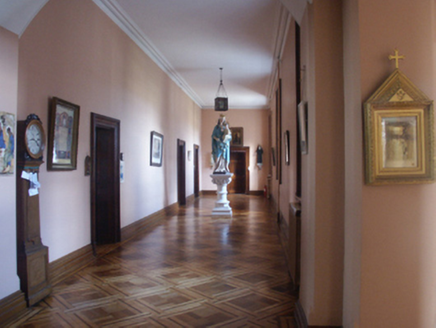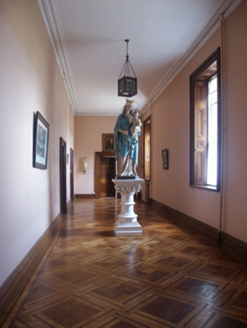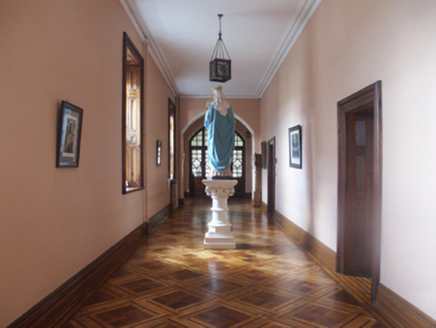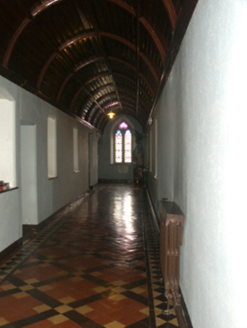Survey Data
Reg No
15505042
Rating
Regional
Categories of Special Interest
Architectural, Artistic, Historical, Social
Original Use
Convent/nunnery
In Use As
Convent/nunnery
Date
1885 - 1890
Coordinates
304956, 121415
Date Recorded
05/07/2005
Date Updated
--/--/--
Description
Detached seven-bay three-storey convent, built 1886-7; opened 1887, on an L-shaped plan centred on single-bay three-storey gabled breakfront with single-bay single-storey gabled projecting porch to ground floor; single-bay (seven-bay deep) three-storey over basement return (east). Occupied, 1901; 1911. Pitched slate roof on an L-shaped plan centred on pitched (gabled) slate roof (breakfront); pitched (gabled) slate roof (porch), crested terracotta ridge ties, paired red brick Running bond buttressed central chimney stacks having cut-granite stringcourses below cut-granite chamfered capping supporting yellow terracotta pots, roll moulded cut-granite coping to gables on cut-granite corbel kneelers with Celtic Cross finials to apexes, and cast-iron rainwater goods on red brick header bond thumbnail beaded cornice retaining cast-iron square profile downpipes. Part repointed tuck pointed coursed or snecked "Old Red Sandstone" walls on cut-granite chamfered cushion course on plinth with cut-granite flush quoins to corners including cut-granite flush quoins to corners (breakfront). Pointed-arch central door opening (porch) approached by two cut-granite steps between wrought iron railings, cut-granite block-and-start surround having moulded reveals with hood moulding on monolithic label stops framing quatrefoil-detailed timber panelled double door having trefoil-detailed overlight. Shouldered square-headed window openings ("cheeks") with cut-granite chamfered sills, and cut-granite block-and-start surrounds having chamfered reveals framing fixed-pane fittings having square glazing bars. Pointed segmental-headed window opening in bipartite arrangement (first floor) with cut-granite chamfered sill course, cut-granite mullion, and cut-granite block-and-start surround having chamfered reveals with hood moulding framing fixed-pane fittings having square glazing bars. Trefoil-detailed pointed-arch window opening in bipartite arrangement (top floor) with cut-granite chamfered sill course, cut-granite mullion, and cut-granite block-and-start surround having chamfered reveals with hood moulding framing fixed-pane fittings having square glazing bars. Pointed segmental-headed window openings (ground floor) with cut-granite chamfered sills, and cut-granite block-and-start surrounds having chamfered reveals with hood mouldings framing two-over-two timber sash windows having overlights. Cusped or trefoil-headed window openings (first floor) with cut-granite chamfered sill courses, and cut-granite block-and-start surrounds having chamfered reveals with hood mouldings framing two-over-two timber sash windows having "lozenge"-detailed overlights. Shouldered square-headed window openings (top floor) with cut-granite chamfered sill courses, and cut-granite block-and-start surrounds having chamfered reveals framing two-over-two timber sash windows. Interior including (ground floor): central hall on a square plan retaining encaustic tiled floor, carved timber surrounds to door openings framing timber panelled doors centred on glazed timber panelled double doors having sidelights on panelled risers below overlight, and moulded plasterwork cornice to ceiling; public room (north) retaining carved timber surround to door opening framing timber panelled door with carved timber surrounds to window openings framing timber panelled shutters, chimneypiece, and moulded plasterwork cornice to ceiling; public room (south) retaining carved timber surround to door opening framing timber panelled door with carved timber surrounds to window openings framing timber panelled shutters, chimneypiece, and moulded plasterwork cornice to ceiling; and carved timber surrounds to door openings to remainder framing timber panelled doors with carved timber surrounds to window openings framing timber panelled shutters. Set in shared grounds.
Appraisal
A convent erected by Mrs. Mary O'Connor (1837-1927) representing an important component of the later nineteenth-century built heritage of Wexford with the architectural value of the composition, one largely endowed by Richard Joseph Devereux (1829-83), confirmed by such attributes as symmetrical frontage centred on an expressed breakfront; the construction in a ruby-coloured "Old Red Sandstone" offset by silver-grey granite dressings not only demonstrating good quality workmanship, but also producing a lively two-tone palette; the "pointed" profile of the openings underpinning a Domestic Gothic theme; and the high pitched roofline showing a two-tone slate finish. Having been well maintained, the elementary form and massing survive intact together with substantial quantities of the original fabric, both to the exterior and to the interior where encaustic tile work; contemporary joinery; parquetry; restrained chimneypieces; and sleek plasterwork refinements, all highlight the artistic potential of a convent forming part of a self-contained group alongside the adjacent Catholic Church of the Assumption (see 15505043) with the resulting ecclesiastical ensemble making a pleasing visual statement in an urban street scene. NOTE: According to tradition a stone from the medieval Saint Bridget's Church [SMR WX037-032018-] was repurposed as the foundation stone for the present convent.
